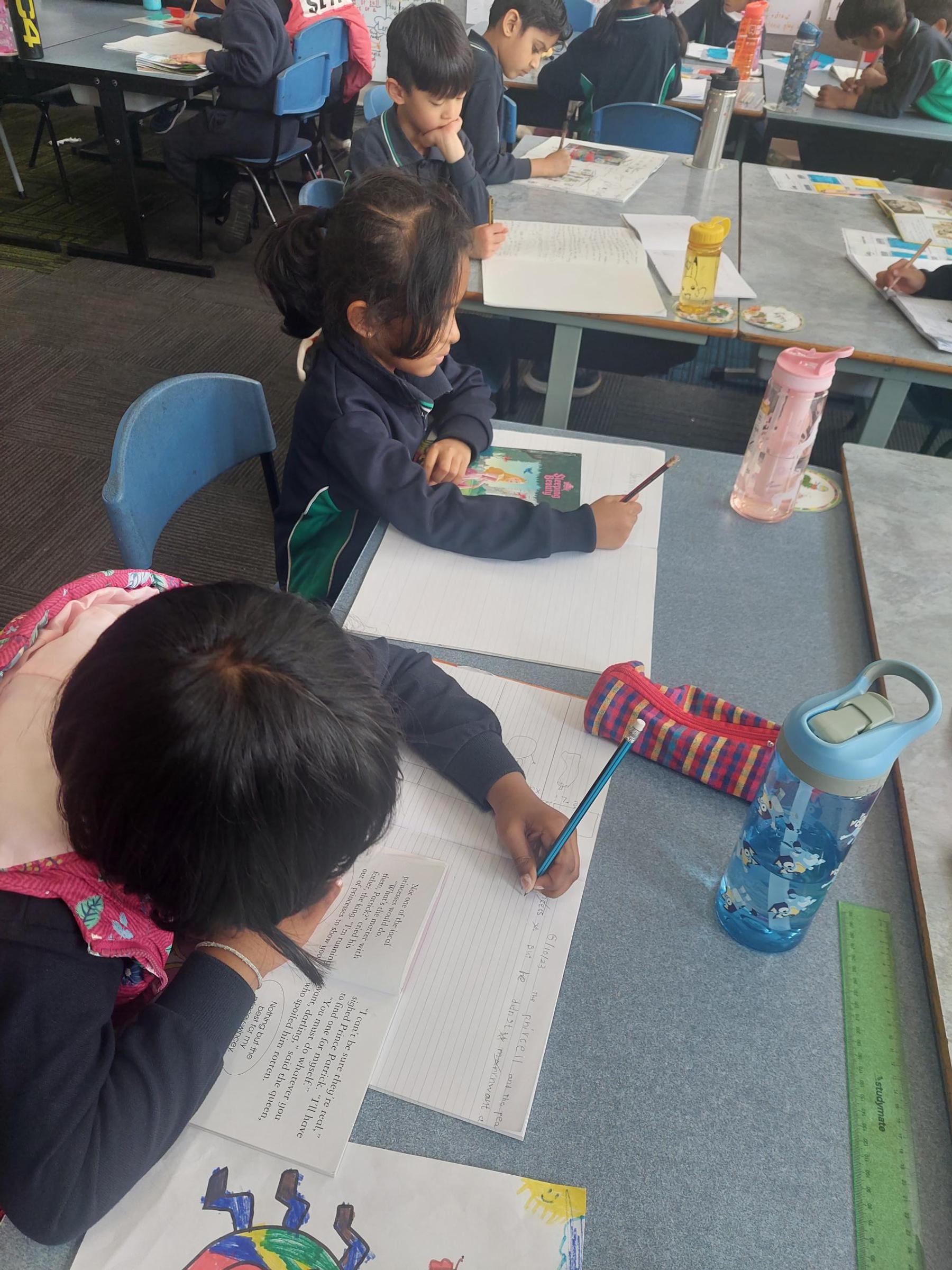Writing

As we journey into the final term of the academic year, we are diving headfirst into procedural texts.
Students will deepen their understanding of the types of procedural texts through exploring visual and written text through interactive activities like building Lego, creating a code for the Dash Dot and making origami. They will discover the importance of giving clear, step-by-step instructions. As they immerse themselves in procedural texts students will break tasks down logically, fostering critical thinking and communication skills.
Students will develop their creative writing as they explore the captivating realms of poetry. They will explore how poetry can be utilised to express emotions, thoughts, and experiences. Through the art of poetry, students will have the opportunity to harness the power of words to paint vivid imagery, convey their feelings, and craft narratives. They will experiment with various forms of poetry; from traditional poems to contemporary free verse which will encapsulate their own experiences and imaginations through applying different poetic techniques like metaphors, similes, and personification.
Through VOICES conferences, students will explore the strategies that they have been applying in their writing and be provided with personalised feedback and guidance to help consolidate their learning across the Writing curriculum.
To support your child’s Writing skills at home, you could:
- Explore procedural texts a home i.e. recipes, DIY instructions, craft instructions, games rules, Lego instructions. Are they clear? Were they easy to follow? Why/why not?
- Explore poetry at home by listening to different songs and exploring their lyrics, traditional tales or nursery rhymes, greetings in cards or advertising slogans/jingles.
- Practise Sustained Writing at home, by having your child write a set of instructions for something that they have enjoyed making/playing with the focus on adding imperative verbs such as: pour, stir, read, to ensure the instruction is clear.
- Encourage your child to use newly learnt words in their writing.
- Encourage your child to read over their writing to edit for spelling, punctuation and fluency.
